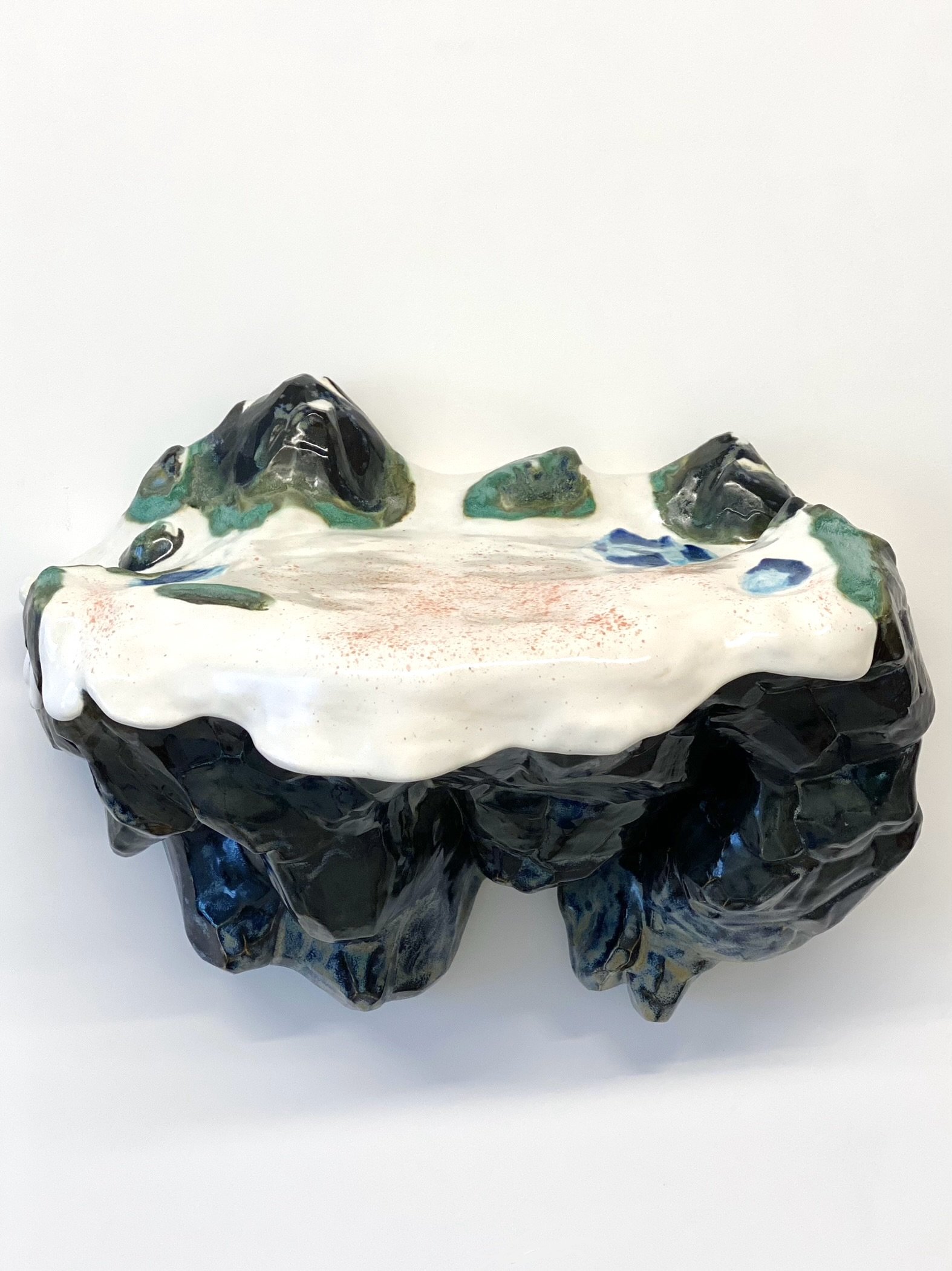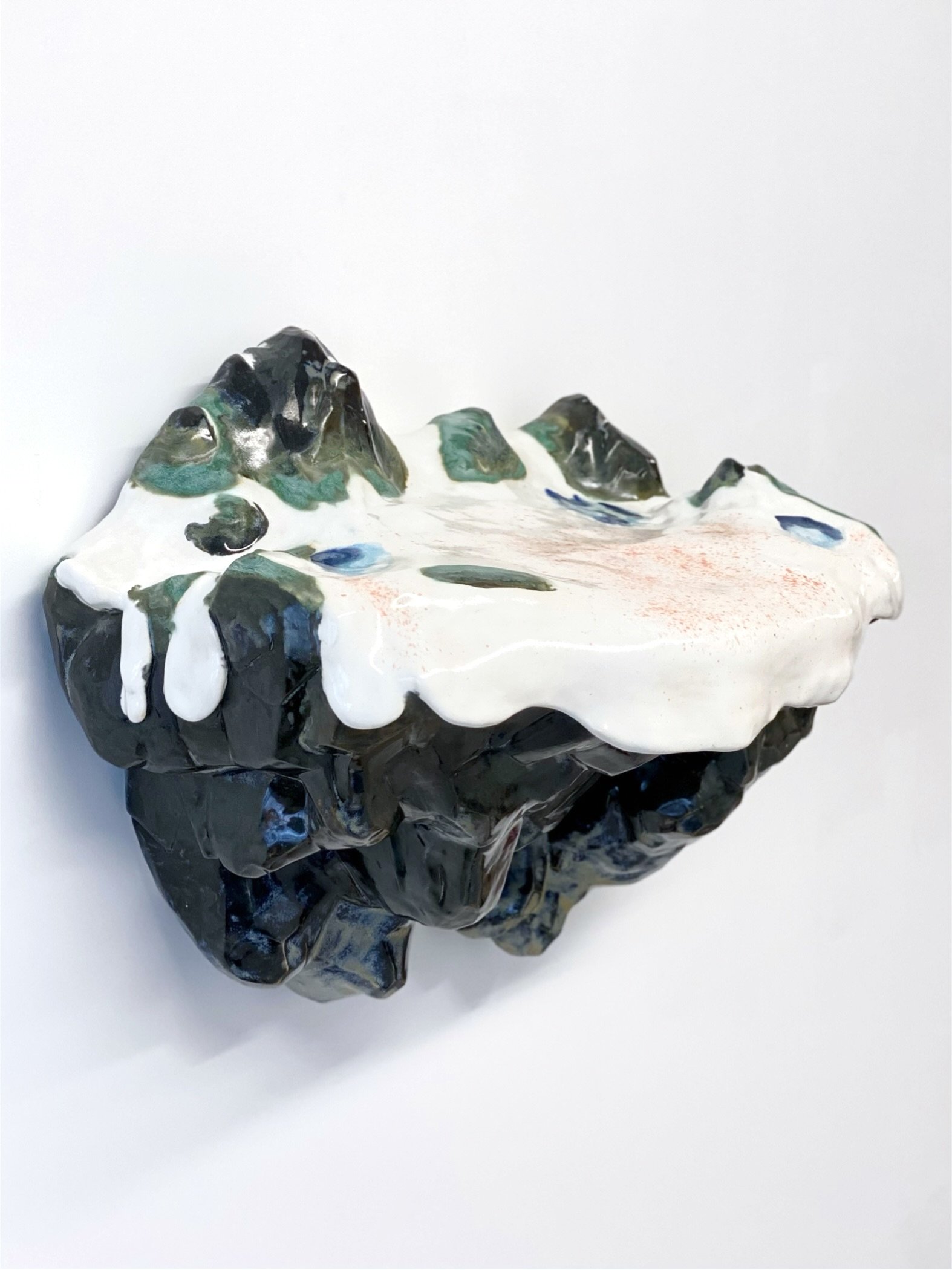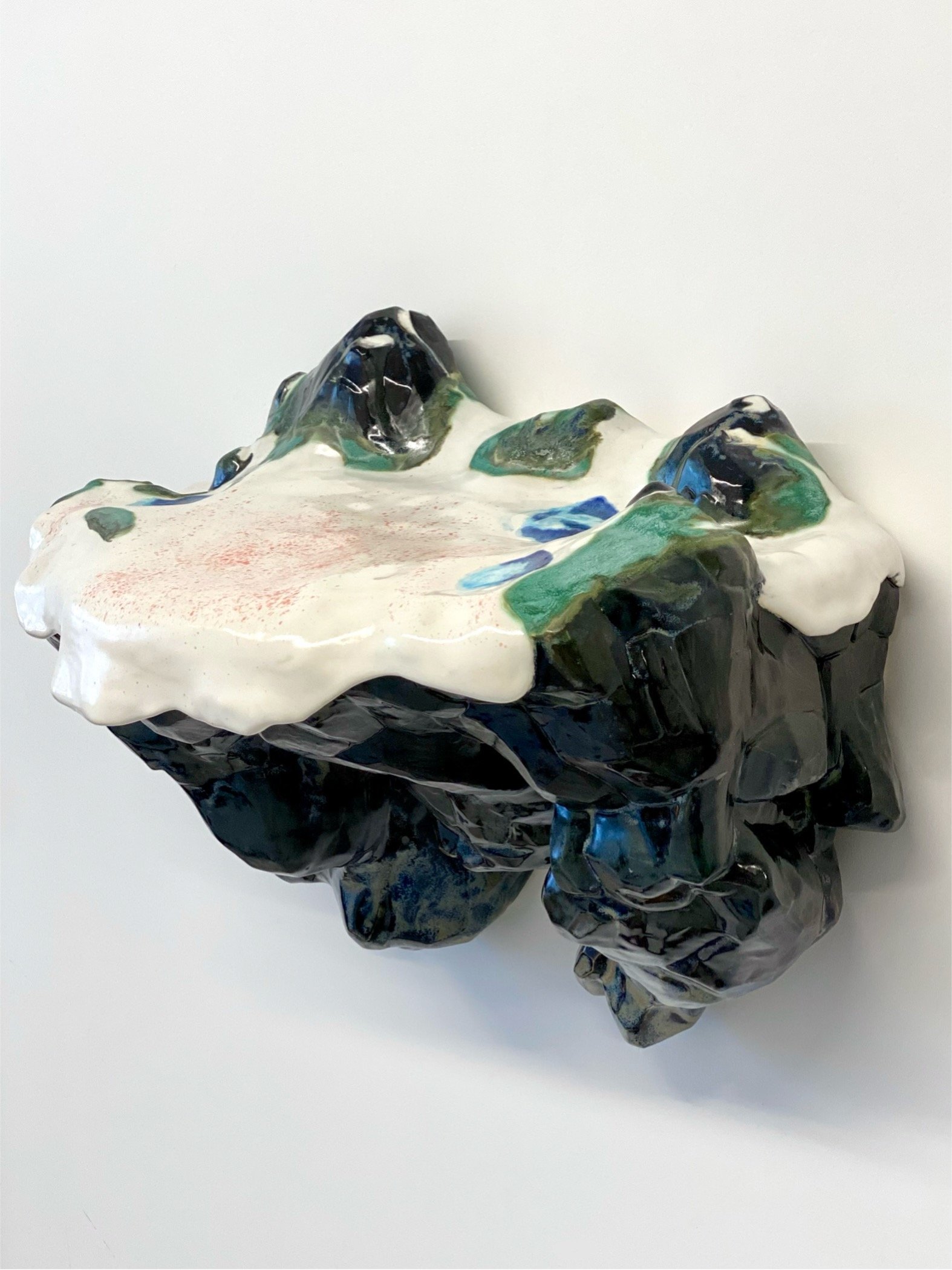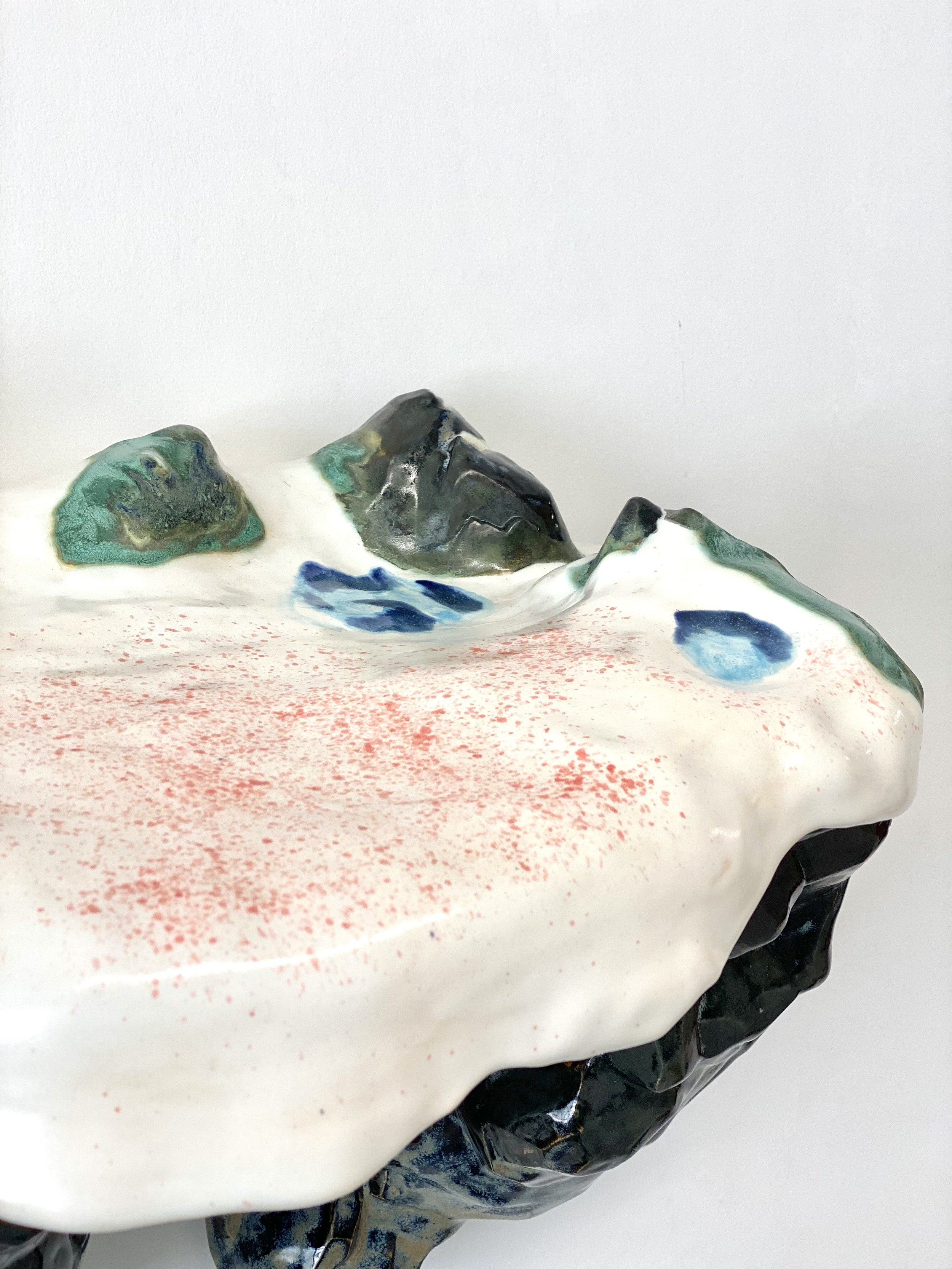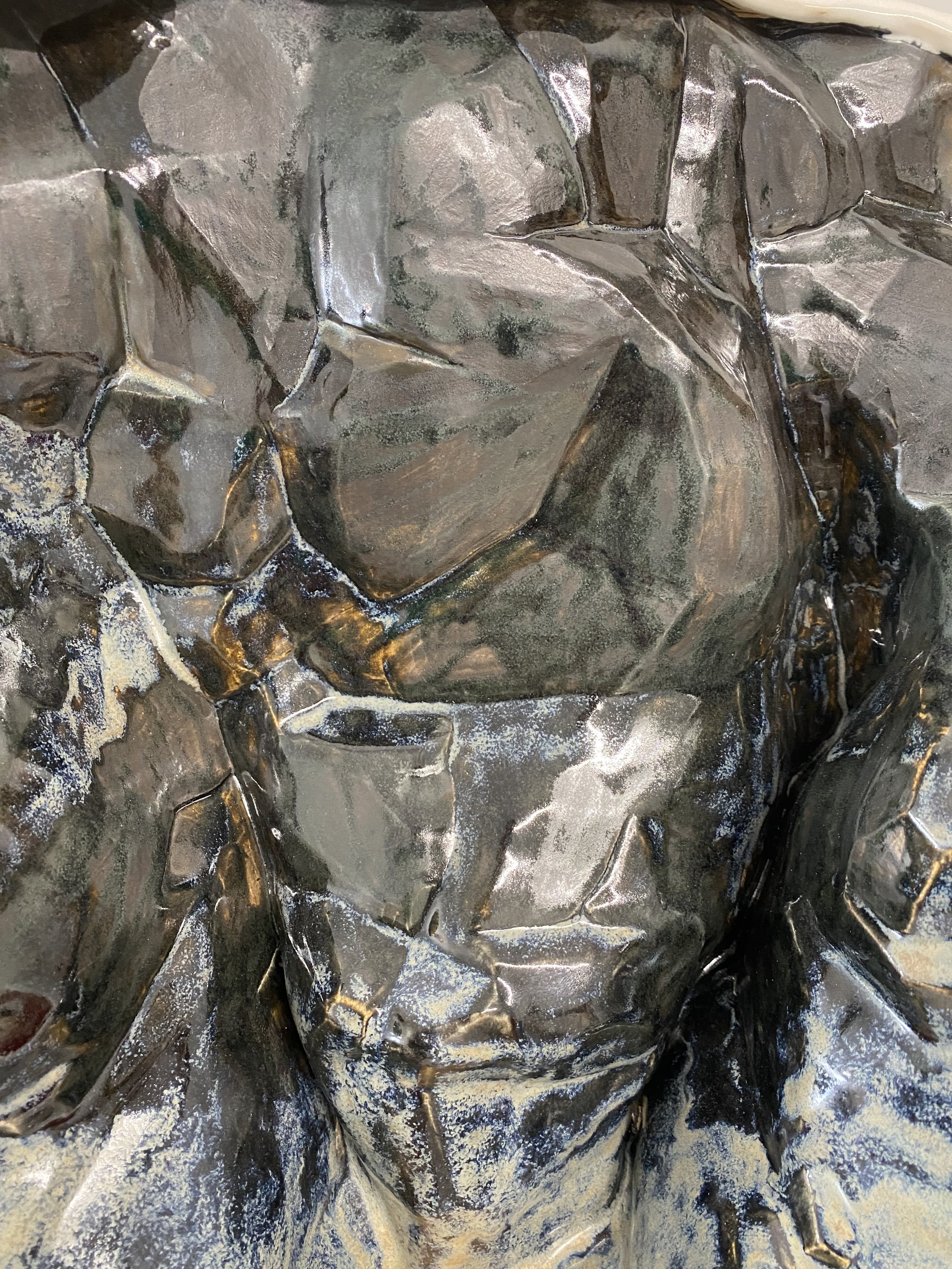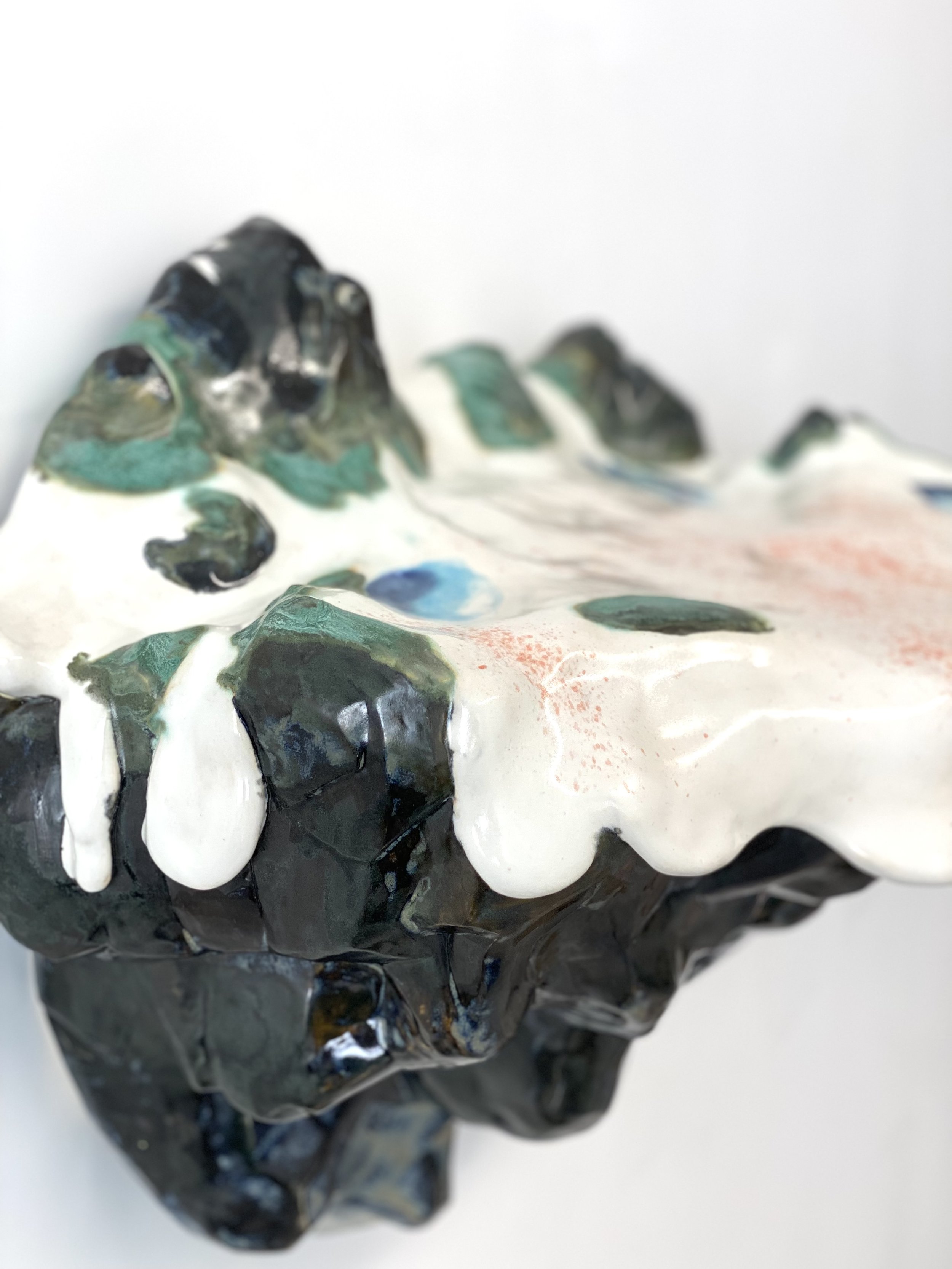Watermelon Snow, 2024
A reddish pink hue is sometimes found on glaciers exposed to melting temperature. It is due to algae blooms that can also turn the snow green (thus the nickname "watermelon snow"). The red-tinted phenomenon is also referred to as glacial blood. The algae have become the subject of more research recently, scientists discovering a diverse and complex environment that makes up these blooms. The red color is actually a protective mechanism developed by the micro-algae as protection against harmful sun rays. At the same time, the darker color makes the snow melt faster, providing more water and nutrients for the algae to thrive and acting as a carbon sink. In a twisted feedback loop, the dark color also makes the glaciers melt faster, eventually contributing in their subtle and significant way to the collapse of the glaciers and thus to the algae's own demise.
Glazed stoneware
Dimensions: 21” X 17” x 13”
